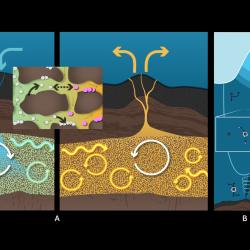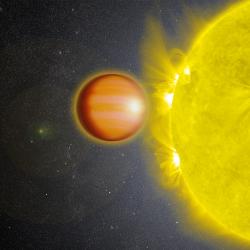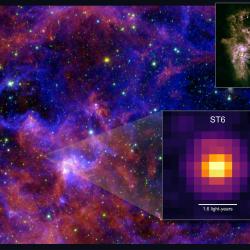UMD-led Center for Research and Exploration in Space Science & Technology Signs $178M Cooperative Agreement to Continue Partnership with NASA Through 2027
CRESST II will continue to foster research collaborations between NASA Goddard and partner institutions, including UMD
The Center for Research and Exploration in Space Science & Technology II (CRESST II), a partnership between NASA’s Goddard Space Flight Center and four universities—led by researchers at the University of Maryland, College Park’s (UMD) Department of Astronomy—has received an extension of its cooperative agreement through March 2027 and been funded in the amount of $178 million. The extension will enable the center to continue current collaborations and expand on the partnership’s success.
CRESST was created in 2006 with a 10-year cooperative agreement, and CRESST II began in 2017 with a five-year cooperative agreement of $87.5 million. CRESST II’s goal was to continue to facilitate collaborations between researchers at NASA’s Goddard Space Flight Center and space scientists from CRESST II partner institutions. Led by UMD, CRESST II partner institutions include the University of Maryland, Baltimore County (UMBC); the Catholic University of America, Howard University and the Southeastern Universities Research Association (SURA).
“Team Maryland is proud of the close relationship between the University of Maryland and federal agencies like NASA that keeps our nation and our state on the cutting edge of research and technology,” said U.S. Senator Ben Cardin. “NASA’s decision to renew and enhance the CRESST II Partnership, led by the University of Maryland, College Park and including the University of Maryland, Baltimore County (UMBC), builds on a successful collaboration and will continue to develop top-notch scientific talent at NASA Goddard Space Flight Center in Prince George’s County.”
Roughly 160 CRESST II scientists are involved in the construction and testing of instrumentation for NASA missions, the planning of future missions and the development of new technology to enable future missions. Through CRESST II, partner institution scientists contribute to a range of space science and research projects, from probing the universe with the Fermi Gamma-ray Space Telescope to analyzing the interiors of neutron stars with the Neutron star Interior Composition Explorer and studying the atmosphere and surface of Mars with the Mars Exploration Program.
“This agreement reinforces the message that the United States recognizes the need to pursue innovation and space exploration, and this vital partnership between NASA and UMD will keep us at the forefront of space science research," said Amitabh Varshney, dean of UMD's College of Computer, Mathematical, and Natural Sciences.
The close association between NASA Goddard and the CRESST II partner institutions enhances STEM education and diversity, creates opportunities to train a new generation of leaders in space science, and provides researchers with critical space science data from current and past NASA missions. The cooperative agreement extension reflects the success of these partnerships in advancing NASA’s research goals.
“The CRESST partnership provides an amazing opportunity for government and university researchers to jointly advance NASA research and space science,” said Laurie Locascio, vice president for research at UMD. “The collaboration has demonstrated the value of our partnership and our capability to do great work together.”
“As a campus, we are proud of our quarter-century of close research collaboration with NASA Goddard, and we appreciate the fruitful partnership with our colleagues at the University of Maryland and other institutions under the CRESST II program, which we launched together over four years ago,” said Karl Steiner, vice president for research at UMBC.
In addition to establishing research collaborations, a key component of the partnership is to provide opportunities for students to conduct research and contribute to NASA missions.
“It’s a real opportunity for students to get involved with the kind of research that is uniquely able to be done at Goddard, both in terms of having access to the scientific expertise of people using space exploration instruments and the people building next generation instrumentation at Goddard,” said Lee Mundy, professor of astronomy at UMD and director of CRESST II.
The partnership currently supports more than a dozen graduate students who are working at NASA Goddard to complete their Ph.D.s with both NASA and university advisors. Undergraduate students also participate in research projects at NASA Goddard during the academic year, and the CRESST II Summer Internship Program supports more than a dozen interns annually. There are also opportunities for students recently awarded bachelor’s degrees to receive individual mentoring, career workshops and work experiences prior to pursuing graduate degrees.
“The partnerships have been phenomenal,” said Don Engel, Director of UMBC’s Center for Space Science and Technology (CSST) and assistant professor in the Department of Computer Science and Electrical Engineering. “Through having multiple institutions, we’re able to learn from each other’s ideas and strengths. We can tap into the broader resources at each of our institutions for things like trainings.”
Over the coming years, CRESST II scientists and students look forward to opportunities expanding with new missions, such as the launching of the James Webb Space Telescope.
Writer: Kimbra Cutlip







